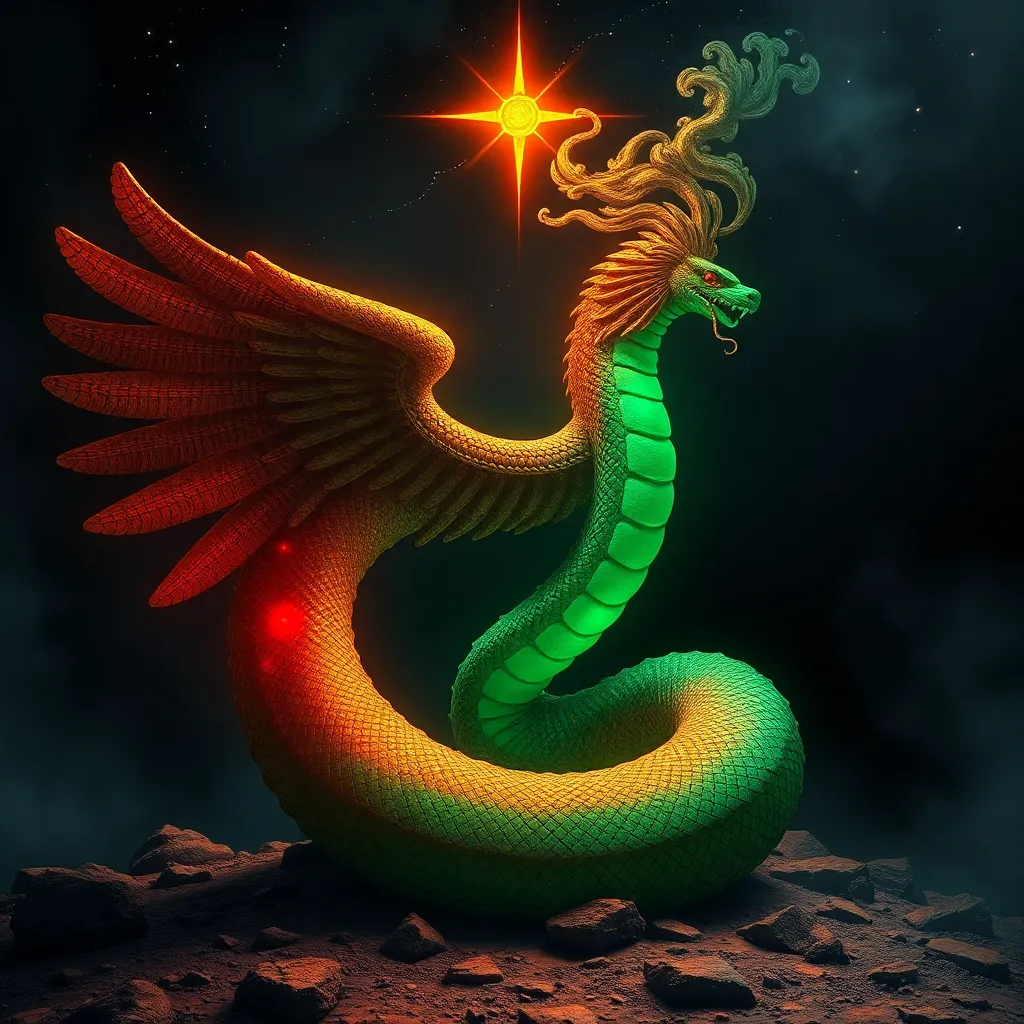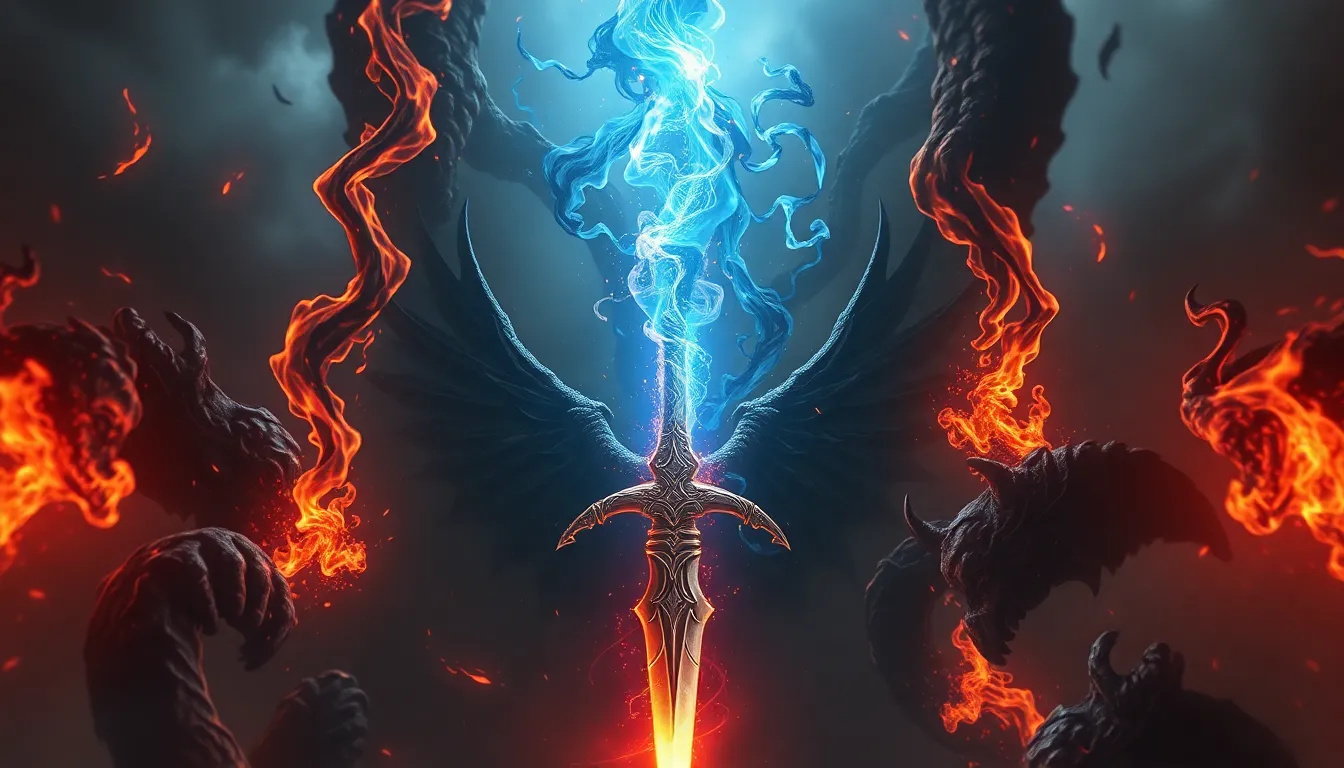The Serpent, the Wind, and the Morning Star: Exploring the Symbolism of Quetzalcoatl
I. Introduction
Quetzalcoatl, often referred to as the “Feathered Serpent,” is one of the most significant deities in Mesoamerican mythology, revered across various cultures including the Aztec, Toltec, and Maya. His multifaceted nature embodies a rich tapestry of symbolism that is crucial for understanding the spiritual and cultural narratives of these ancient civilizations.
Symbolism plays a pivotal role in interpreting the beliefs and practices of cultures, providing insights into their worldview and social structures. This article aims to explore the intricate symbolism associated with Quetzalcoatl, examining his representation as the serpent, the wind, and the morning star. Through this exploration, we will uncover the profound meanings that these symbols hold in Mesoamerican heritage.
II. Historical Context of Quetzalcoatl
The origins of Quetzalcoatl can be traced back to the early Mesoamerican civilizations, where he emerged as a prominent figure in their mythologies. His narratives are interwoven with creation myths, agricultural cycles, and the duality of existence.
Across different cultures, Quetzalcoatl has been interpreted in various ways:
- Aztec: Considered a god of wind, air, and learning, associated with the planet Venus.
- Toltec: Seen as a cultural hero and priest, symbolizing civilization and enlightenment.
- Maya: Connected with the agriculture and fertility of crops.
Historical narratives and archaeological evidence highlight the significance of Quetzalcoatl in rituals, art, and governance, reflecting his importance in the societal structures of these ancient peoples.
III. The Serpent: Symbol of Duality
The serpent holds a prominent place in Mesoamerican belief systems, often representing duality. Quetzalcoatl’s embodiment as a serpent illustrates this concept, reflecting both creation and destruction.
The dual nature of Quetzalcoatl can be summarized as follows:
- Creator: As a god of creation, Quetzalcoatl is responsible for the birth of humanity and the cultivation of life.
- Destroyer: Conversely, he also represents the forces that can lead to destruction and chaos, reminding followers of the cyclical nature of existence.
Furthermore, the serpent symbolizes fertility and renewal, integral to agricultural societies. It embodies the earth’s capacity to regenerate, emphasizing the connection between life, death, and rebirth.
IV. The Wind: Breath of Life and Change
Quetzalcoatl’s role as the god of wind is significant within Mesoamerican cosmology. Wind is seen as the breath of life, essential to the vitality of the earth and its inhabitants.
In this context, wind serves as a metaphor for:
- Change: The ever-shifting nature of life, representing both the physical and spiritual transformations experienced by individuals and societies.
- Life Force: Wind is considered to carry the life force, linking it to the creation and sustenance of life itself.
This connection between wind and life reinforces the idea that Quetzalcoatl is not only a creator but also an essential force in the ongoing cycle of existence.
V. The Morning Star: Light and Enlightenment
Quetzalcoatl’s association with the planet Venus, often referred to as the morning star, adds another layer of depth to his symbolism. In various cultures, the morning star signifies hope, guidance, and enlightenment.
The symbolism of the morning star can be explored through the following points:
- Light: It represents illumination, both literally and metaphorically, guiding individuals towards knowledge and truth.
- Enlightenment: Quetzalcoatl’s role as a bringer of knowledge highlights the importance of learning and wisdom in Mesoamerican cultures.
As a symbol of enlightenment, Quetzalcoatl encourages the pursuit of knowledge, emphasizing the transformative power of education and understanding.
VI. Quetzalcoatl in Art and Iconography
Throughout Mesoamerican history, Quetzalcoatl has been depicted in various forms of art and architecture. His representations in visual culture provide valuable insights into the values and beliefs of these civilizations.
Key elements in artistic representations include:
- Feathered Serpent: Often portrayed with vibrant feathers, symbolizing beauty and divinity.
- Wind Symbols: Artistic motifs that represent air and breath, emphasizing his role as a life-giving force.
- Human Figures: Depictions of Quetzalcoatl as a priest or cultural hero, highlighting his influence on society.
These symbolic elements serve as a testament to Quetzalcoatl’s enduring legacy and the cultural practices surrounding his worship.
VII. Modern Interpretations and Cultural Legacy
The influence of Quetzalcoatl extends beyond ancient times, resonating in contemporary culture. His symbolism continues to inspire various forms of expression, including literature, art, and popular media.
Modern interpretations of Quetzalcoatl can be observed in:
- Literature: References to Quetzalcoatl in novels and poetry that explore themes of identity and spirituality.
- Art: Artists drawing on his imagery to convey messages about duality, transformation, and enlightenment.
- Popular Media: Films and games that incorporate elements of Quetzalcoatl’s mythology, bringing awareness to Mesoamerican heritage.
The enduring legacy of Quetzalcoatl also plays a role in modern spirituality, where elements of his symbolism are embraced by individuals seeking a deeper connection to their cultural roots.
VIII. Conclusion
Quetzalcoatl’s multifaceted symbolism as the serpent, the wind, and the morning star provides a rich understanding of Mesoamerican culture and spirituality. Each symbol encapsulates essential aspects of life, death, and transformation, reflecting the intricate relationships between these themes.
Understanding cultural symbols like Quetzalcoatl fosters a greater appreciation of Mesoamerican heritage, encouraging respect for the complexities of these ancient civilizations. As we delve into the significance of Quetzalcoatl today, we recognize the relevance of his teachings in our ongoing quest for knowledge, enlightenment, and connection to the natural world.



